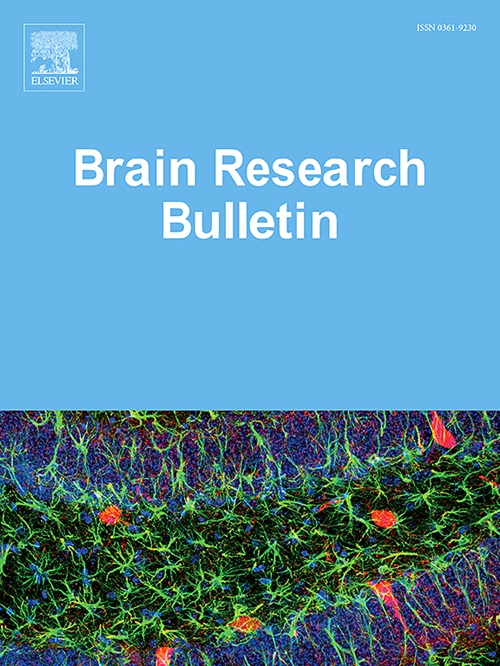Cognitive dysfunction induced by cranial radiotherapy: mechanisms and therapeutic methods
IF 3.5
3区 医学
Q2 NEUROSCIENCES
引用次数: 0
Abstract
Cranial radiotherapy can damage normal brain tissues, inducing cognitive dysfunction in patients. Radiotherapy-induced cognitive dysfunction is associated with hippocampal injury, white matter damage and microvascular injury. In this study, the mechanisms of cognitive dysfunction induced by cranial radiotherapy and combined chemoradiotherapy are reviewed, and the advances in therapeutic methods for radiotherapy-induced brain injury are summarized. The mechanisms of radiotherapy-induced brain injury include a decline of neurogenesis, impairment of neurons and glial cells, vascular injury, oxidative stress and DNA damage, cell death, and inflammatory response. Disruption of the blood![]() brain barrier (BBB) increases the exposure of the brain to chemotherapeutic agents, thus exacerbating radiotherapy-induced brain damage. The current methods used to prevent radiotherapy-induced brain injury mainly include precision radiotherapy, stem cell transplantation, and treatment with neuroprotective drugs. The combined application of precision radiotherapy and neuroprotective drugs, including antioxidants, anti-inflammatory agents and other drugs, might exert better neuroprotective effects. To resolve the issues of neuroprotective drugs, such as difficulty in crossing the BBB, nanoenzymes and drug delivery nano-systems could be applied in the future.
brain barrier (BBB) increases the exposure of the brain to chemotherapeutic agents, thus exacerbating radiotherapy-induced brain damage. The current methods used to prevent radiotherapy-induced brain injury mainly include precision radiotherapy, stem cell transplantation, and treatment with neuroprotective drugs. The combined application of precision radiotherapy and neuroprotective drugs, including antioxidants, anti-inflammatory agents and other drugs, might exert better neuroprotective effects. To resolve the issues of neuroprotective drugs, such as difficulty in crossing the BBB, nanoenzymes and drug delivery nano-systems could be applied in the future.
颅脑放射治疗引起的认知功能障碍:机制和治疗方法。
颅脑放疗会损伤正常脑组织,诱发患者认知功能障碍。放疗引起的认知功能障碍与海马损伤、白质损伤和微血管损伤有关。本研究综述了颅脑放疗和联合化放疗诱发认知功能障碍的机制,并总结了放疗诱发脑损伤治疗方法的进展。放疗诱发脑损伤的机制包括神经发生下降、神经元和胶质细胞受损、血管损伤、氧化应激和 DNA 损伤、细胞死亡和炎症反应。血脑屏障(BBB)的破坏会增加大脑与化疗药物的接触,从而加剧放疗引起的脑损伤。目前用于预防放疗诱发脑损伤的方法主要包括精确放疗、干细胞移植和神经保护药物治疗。精确放疗和神经保护药物(包括抗氧化剂、抗炎剂和其他药物)的联合应用可能会发挥更好的神经保护作用。为解决神经保护药物难以通过 BBB 等问题,未来可应用纳米酶和纳米给药系统。
本文章由计算机程序翻译,如有差异,请以英文原文为准。
求助全文
约1分钟内获得全文
求助全文
来源期刊

Brain Research Bulletin
医学-神经科学
CiteScore
6.90
自引率
2.60%
发文量
253
审稿时长
67 days
期刊介绍:
The Brain Research Bulletin (BRB) aims to publish novel work that advances our knowledge of molecular and cellular mechanisms that underlie neural network properties associated with behavior, cognition and other brain functions during neurodevelopment and in the adult. Although clinical research is out of the Journal''s scope, the BRB also aims to publish translation research that provides insight into biological mechanisms and processes associated with neurodegeneration mechanisms, neurological diseases and neuropsychiatric disorders. The Journal is especially interested in research using novel methodologies, such as optogenetics, multielectrode array recordings and life imaging in wild-type and genetically-modified animal models, with the goal to advance our understanding of how neurons, glia and networks function in vivo.
 求助内容:
求助内容: 应助结果提醒方式:
应助结果提醒方式:


